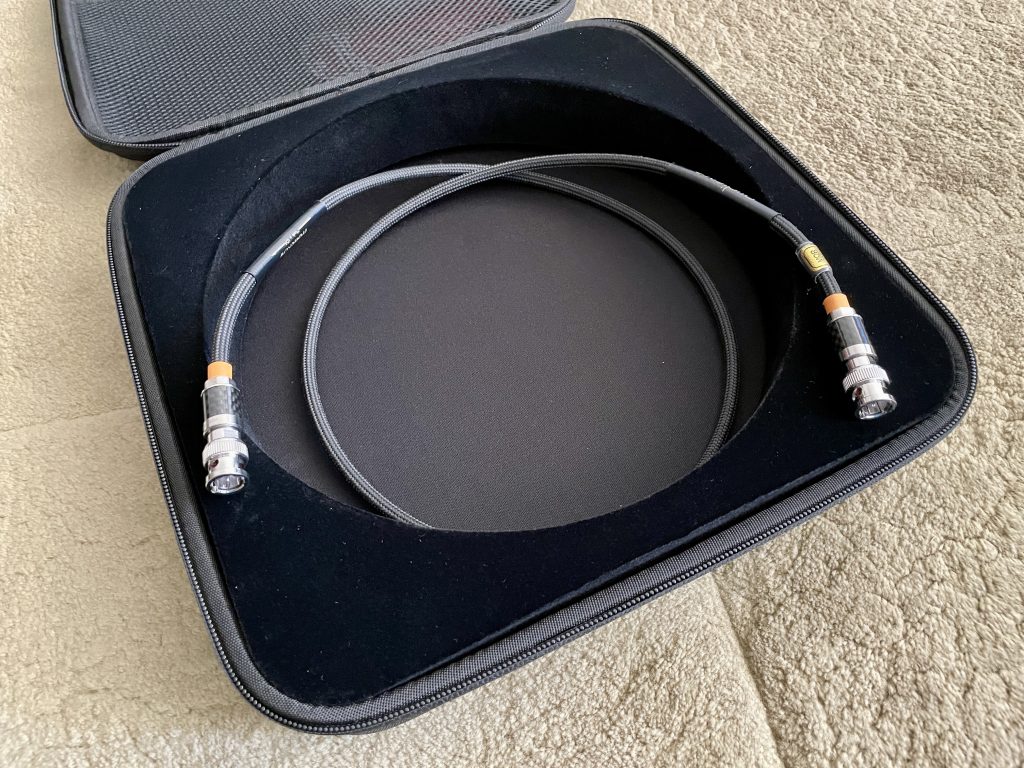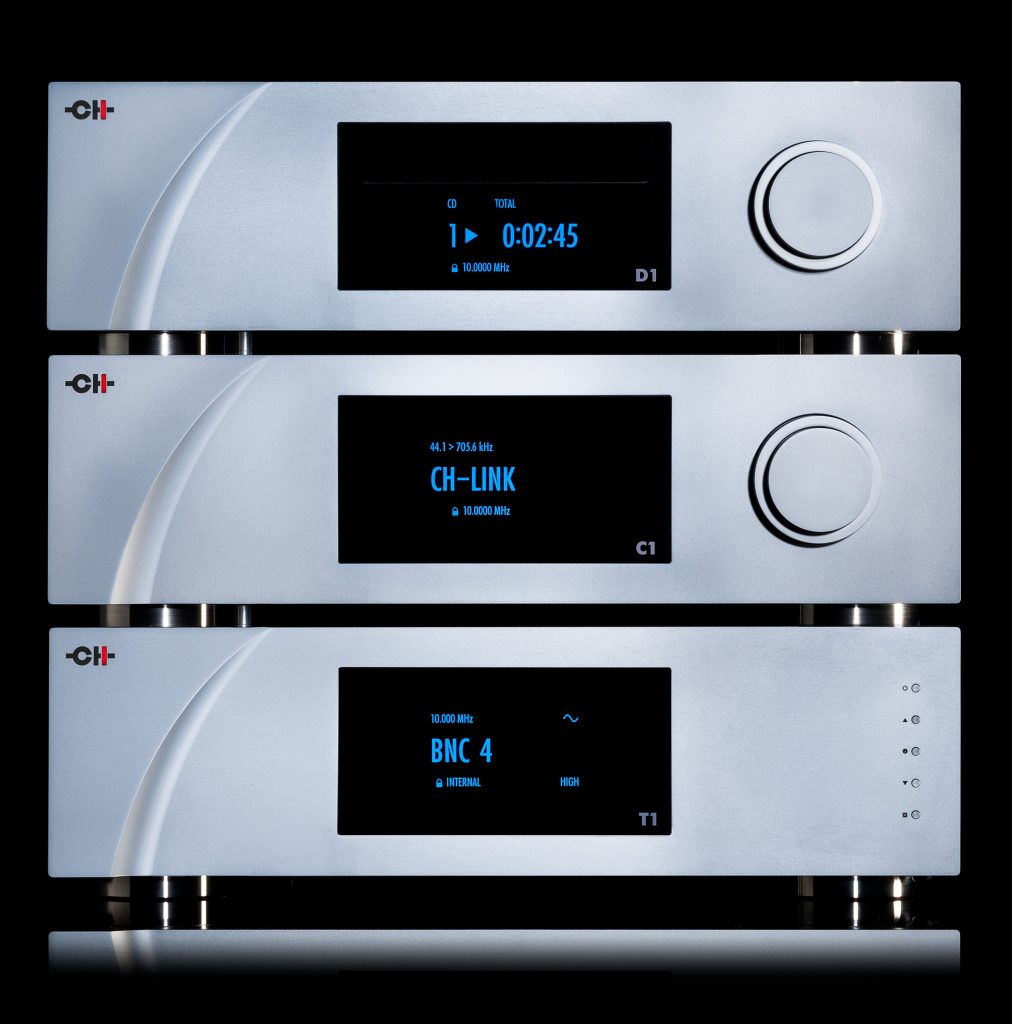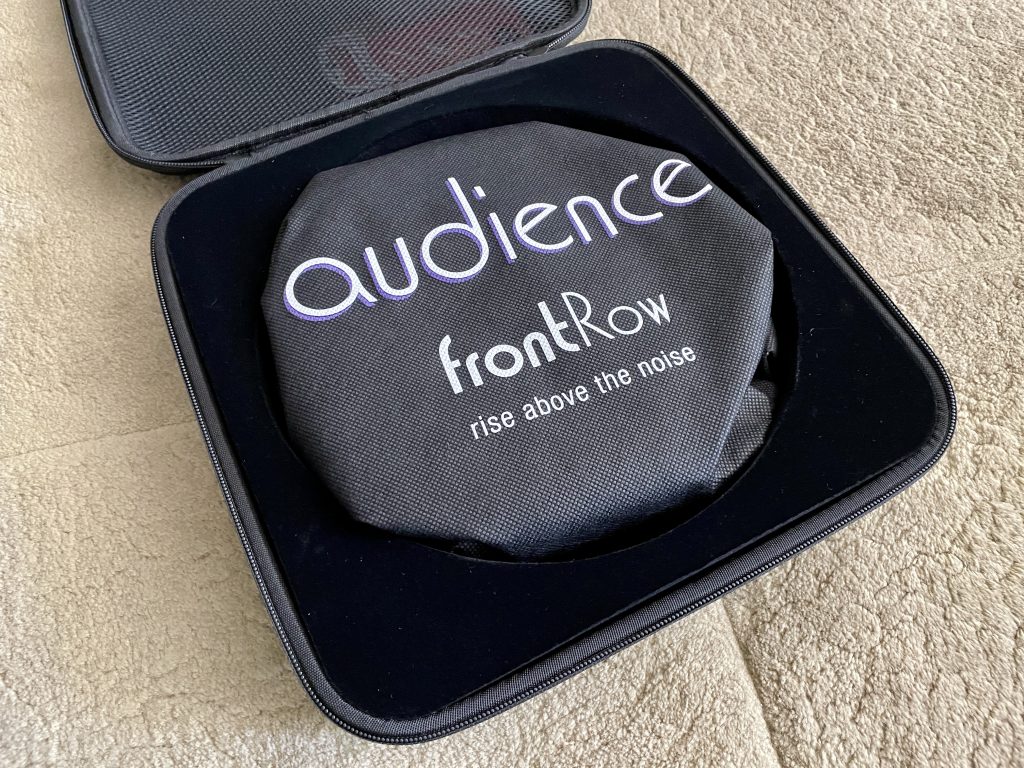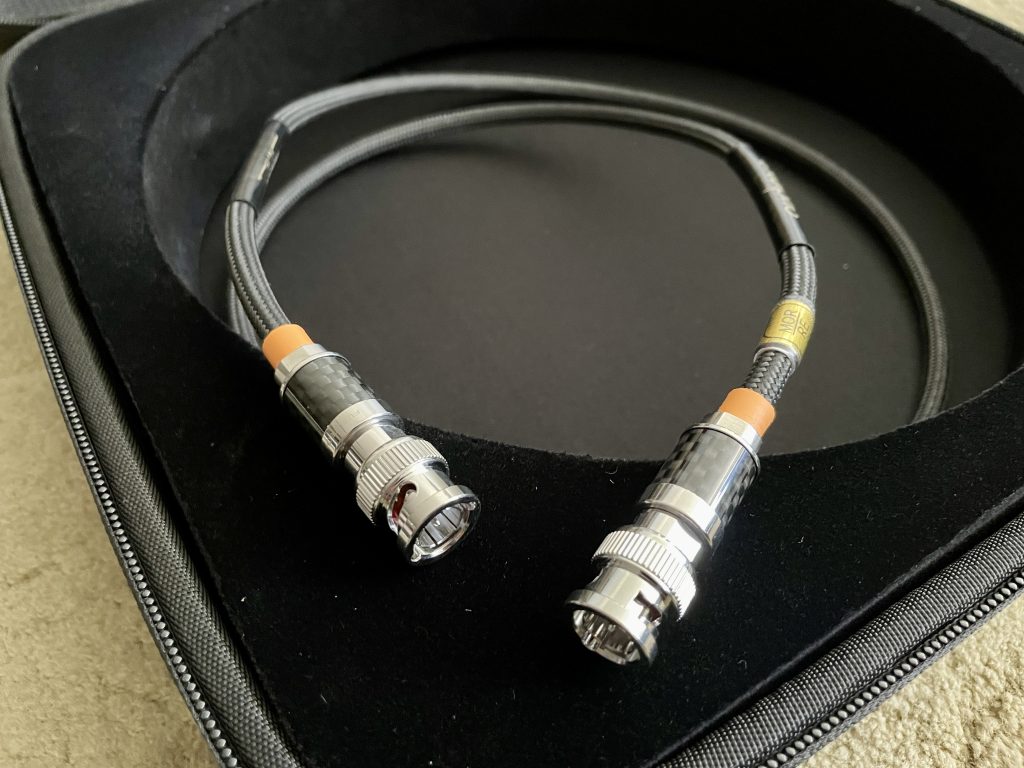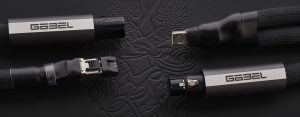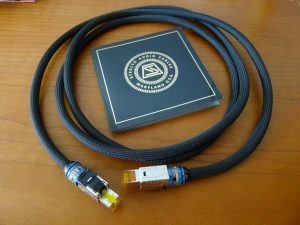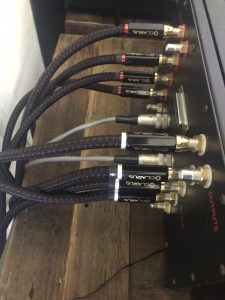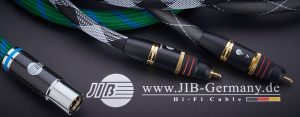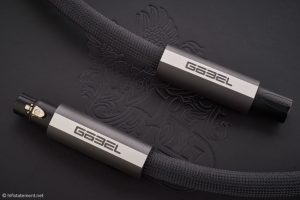Guys who own digital master clocks are very serious about extracting the most from digital sources. If a stock power cord came with the clock, very likely it's still unwrapped in the box, because that would be self-defeating. Audiophiles shooting for the max are OK with substantial outlays for after-market power cords—they've heard the solid benefits on offer. I own the three-box CH Precision digital stack and I treat my T1 Time Reference Digital Clock with an alternating power trio of Audience frontRow ($6200/6ft), AudioQuest Dragon ($7900/2m) or Crystal Cable Monet ($7800/2m) power cords. Some might think I'm a bit obsessive.
Expectations for Clocks and their Cables
Another candidate for upgrade are the cables that carry timing information to the DAC and transport. Initially I thought these were special purpose designs, but it turns out many master clocks use 75 ohm, BNC terminated, single-ended digital interconnects, a staple offering of cable brands. If you think these cables don't matter, think again.
Prior to receiving my clock, I was using the two-box CH D1 transport and C1 DAC. Although each has a built-in, CH recommends using the DAC's clock for both components. With digital separates there must be only one clock master—you want the same time signal applied when extracting the bit stream from the CD as when converting it back to analog on output. My dealer set it up with an off-the-shelf BNC cable to carry clock data between them.
I got my T1 Time Reference for review soon after its release in 2017. At the time, CH Precision was retailing a cable line sourced from Argento Audio, including CH Reference Clock Link cables. (CH Precision no longer retails cables.) I requested a pair along with the T1.
The CH Reference Clock Link
The first thing I wanted to check out was the cable. I left the T1 on the side for the moment and swapped in one length. It was not subtle. Quoting from the review:
Of course, it's the same music—only a healthy dollop of bloom relieves the stingy timbres. A single Ref Clock Link fleshed out images, gave them girth and imparted soft, natural borders. Meanwhile, the stage became less spotty across its width and frequency integration benefited… Low-end extension seemed to plunge deeper with a lot more heft and potency.
This is the kind of difference one would expect from a speaker cable or interconnect upgrade. All it does is carry clock information, not even the data stream, but this was a big deal. I asked CH why it made such a difference:
The quality of the cable is second to none in a clock system. Distortion in the shape and characteristics of the clock signal could result in higher jitter at the receiving end (in the C1 and D1), which would defeat the object of using a low phase-noise clock generator.
Rereading the review today, I would ascribe most of what I heard to how well the Argento cable solved the issues at hand, plus the attractive house signature of the brand. As is demonstrated repeatedly, beyond performing a specific task, cables are not a generic commodity.
Add in the T1
Then I installed the T1 Time Reference and a second Ref Clock Link and was stunned for a second time:
Suddenly notes don't linger about. They land on the beat with a crisp transient, fully expressed sustain, and then are swept away with shortened decays. Note tails are succinct, nothing lags. Everything's moving faster with a finger-snapping velocity and quickened tempo…
The T1 Time Reference let loose a barrage of detail beyond anything I've heard from digital source.
Isn't this what you expect a master clock to deliver? Having reached this point, I figured I was done with the T1 and never thought about it further. Years passed… Recently an audio buddy mentioned what a nice bang he got with a variety of after-market clock cables from Audience, AudioQuest and Nordost. I made a mental note to follow up when time allowed.
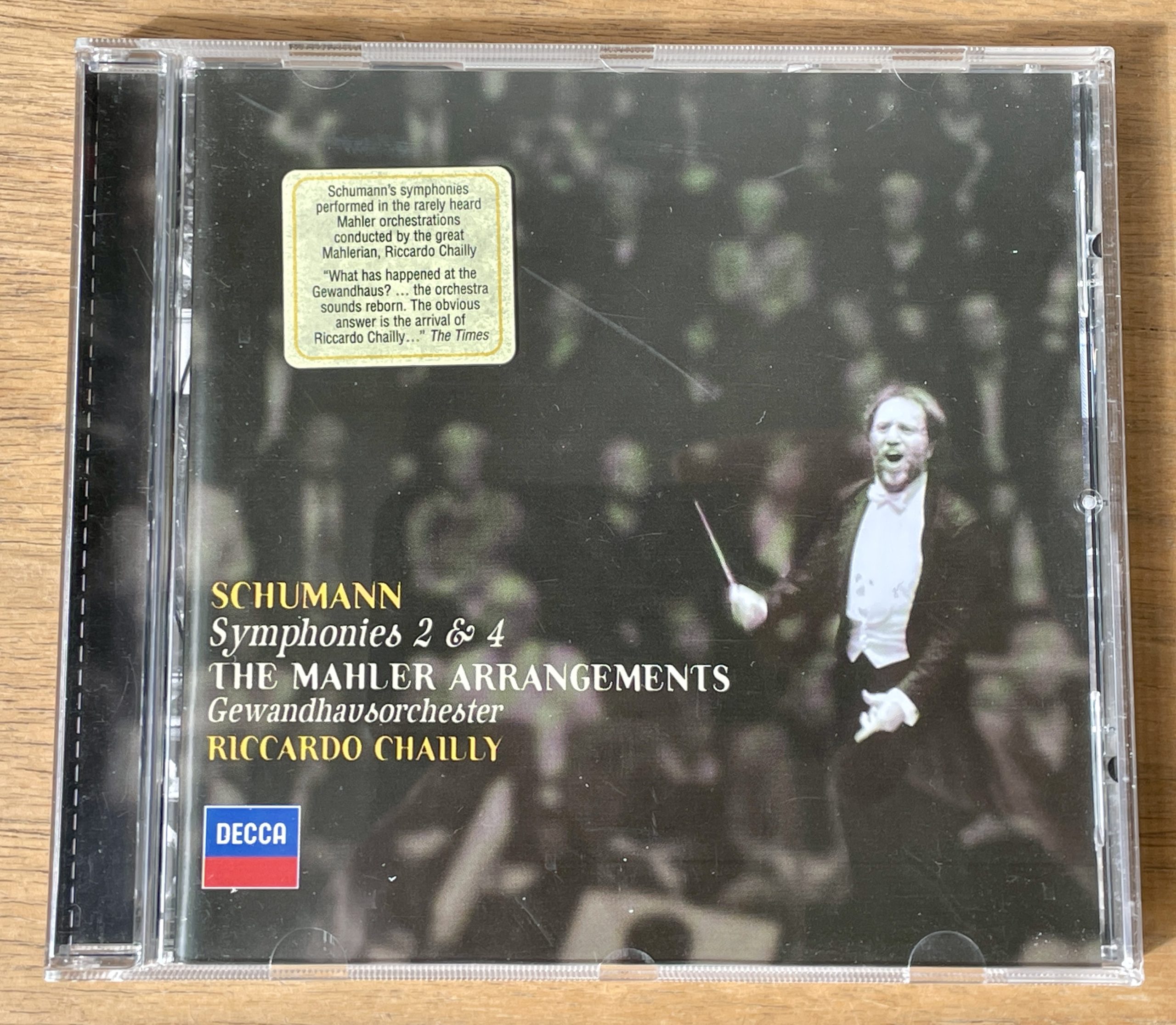
Low-Frequency Orchestral Maneuvers
And here we are. With a pair of Audience 75 ohm, BNC terminated, single-ended frontRow digital interconnects in place, I played Symphony No. 2, from ROBERT SCHUMANN Symphonies 2 & 4 Mahler Edition, with Riccardo Chailly conducting the Gewandhausorchester (Decca Classics). I was in a Chailly phase when I bought this CD due to the rapturous critiques he receives, especially with this orchestra. I also wasn't aware there was a Mahler edition of these scores. The liner notes explain Mahler tightened and simplified Schumann's musical lines, thereby increasing tension and drama. Be that as it may, the performance always struck me as nothing special while the sound was standard Decca Redbook (not great). That's exactly why I chose to listen to this disc first, to see if that impression would be altered.
Notes on the Transient
With the frontRow digital cables in place, I glanced over at Lynn and knew something was up by her unwavering attention. I understood, because I shared it. Symphony No. 2 was making more sense. The relationships among the contrapuntal lines coalesced into an overall narrative, with each individual part made a contribution to the big picture. Now we heard how Mahler tweaked the score, bringing tension and drama, which Chailly made clear. In terms of sound, the Audience clock cables gave us a smooth leading edge, with a stronger bass response (a welcome side benefit). The orchestral sound was very well-balanced.
Swapping back to my clock cables, the transient was brighter; it was apparent the treble was slightly in front. That would suggest an issue with coherency, causing instrument entrances to be slightly out of sync. And that would explain why it wasn't communicating as well. It doesn't take much of a timing mismatch for the ear to notice.
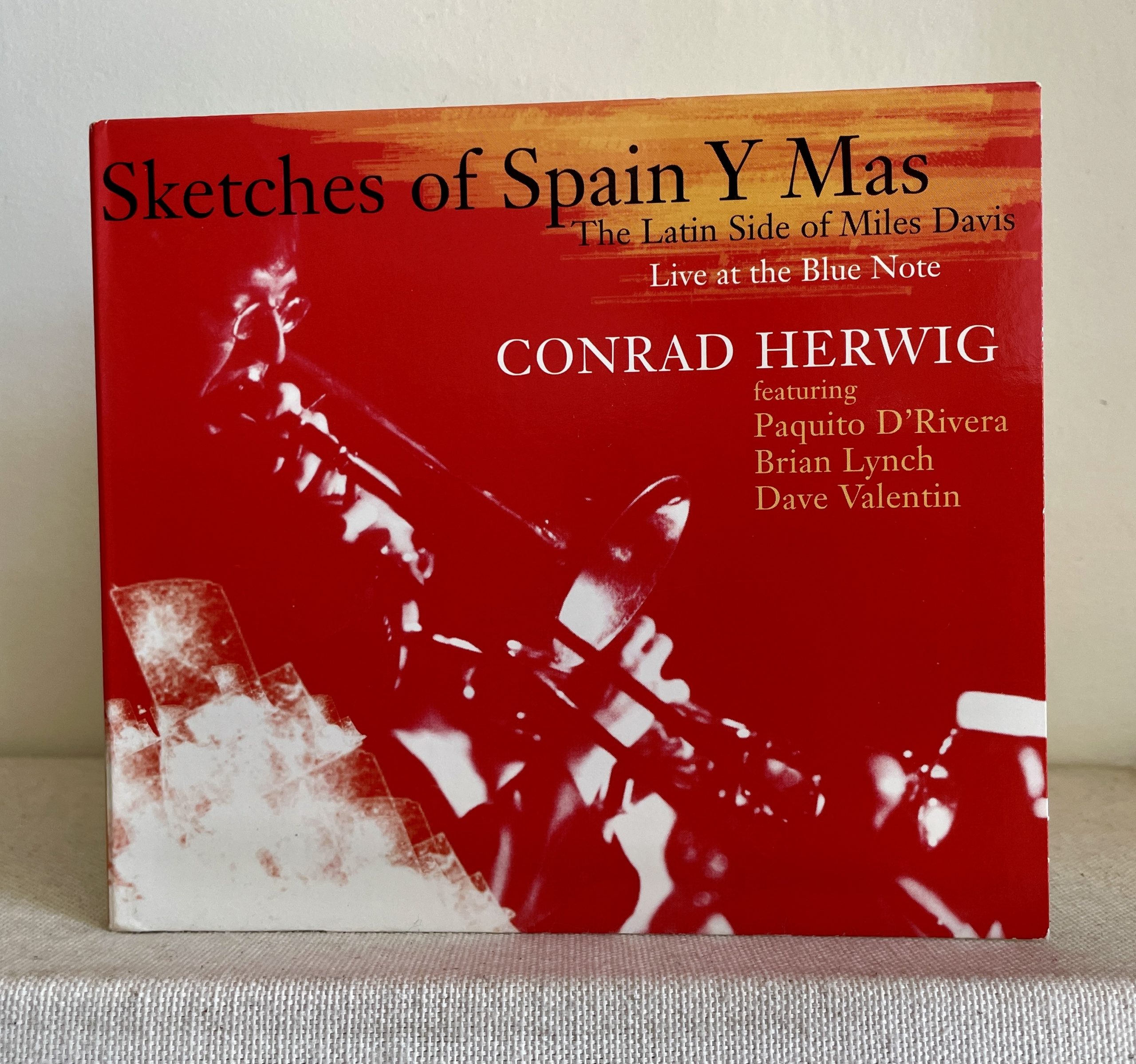
I have always enjoyed Sketches of Spain Y Mas, with Conrad Herwig fronting a small jazz orchestra (HighNote HN 4530). The title track, which goes on for nearly 25 minutes, really pushes my buttons once past the first three minutes or so. When they're laying down the melody there's an issue with the trumpet player, Brian Lynch. He's off the beat by a hair, it's as if he is not hearing the rhythm section. Maybe it has to do with the mute he's using? Possibly others are off as well—the recording is hard to read. Once passed this section, however, you're in for a treat with very entertaining soloing. Paquito D'Rivera is up first on clarinet, followed by Conrad Herwig on trombone. Next is a percussion duet of congas and bongos, spread left/right along the rear wall. Then Brian Lynch comes in with an extended solo on muted trumpet that morphs into call and response with the percussion. All of it is very engaging. Finally, at 23 minutes in, the main melody comes back as they're wrapping up and, lo, there it is again, same as in the intro.
When I installed the Audience clock cables there was no more ambiguity. The finger points to the trumpet and only the trumpet. Mr. Lynch was coming in a hair late and letting it overhang by about as much, in both instances. Could it have been intentional? Perhaps, but that didn't make it any easier to listen to.
Cosmetics, Aesthetics and Parts Quality
When I lifted the shipping package, I was caught off-guard by its weight. It contained two 1m digital interconnects and, knowing Audience is partial to thin, flexible, light-weight cables, why was the box so heavy? It's due to the deluxe packaging—a very well-thought-out box within a box.
The cable has a black mesh outside covering with Audience label and signal flow directional arrows. The beautifully made BNC connectors are sourced from Furutech (and are heavier than the cables.) Here's a design statement from the website:
The Audience Flagship frontRow BNC SPDIF interconnects are a single-ended cable design rendering more accurate and phase correct signal information than ever before. Much of this advanced performance lies in the inclusion of MORRE technologies to every aspect of the cable's design.
The design is a dual concentric ribbon lay with the conductors wound in opposing directions around a XLPE "cross linked polyethylene" core and with XLPE dielectric and jacket. The conductors are 99.999% pure OCC copper subjected to our cryogenic and extreme high voltage treatments.
Our new MORRE Deep Cryo II and EHVP post production processes fundamentally change the baseline of the conductive lattice throughout the cable's geometry reducing electron scatter and producing even greater signal preservation. Accuracy is the end result in preserving the signal.
Conclusion
A digital master clock generates timing signals of high quality, critical in minimizing jitter and achieving the best possible playback. The leading edge of the clock waveform is what triggers the electronic circuits and it needs to be a crisp, clear transition in the level of the incoming clock signal. What would I get from swapping clock cables? Best guess is it would be heard in the ways the master clock itself is heard, impacting transient speed and quality, decay duration, possibly detail retrieval, and certainly noise level. For the most part, those areas were left intact when I put in a pair of Audience frontRow 75 ohm, BNC terminated, single-ended digital interconnects. Except for one.
There was an immediate improvement in how well the system was communicating. Our understanding of the relationships among the contrapuntal lines, how the individual parts added to the bigger picture, was enhanced. Going back to my cables, the brightness in the transient suggested the treble was slightly ahead causing a coherency issue. That would be enough to throw instrument entrances slightly out of sync. It doesn't take much of a timing mismatch for the ear to notice.
The sonic results for any given digital cable depend on two things: how well it solves the issues at hand, plus the house signature the brand brings to bear. Fine design solutions and neutrally voiced products have been Audience's stock in trade from the start, and that's just what the frontRow 75 ohm, BNC terminated, single-ended digital interconnects bring to the table.
frontRow BNC Digital Cable
Retail: $1500/m
Audience




